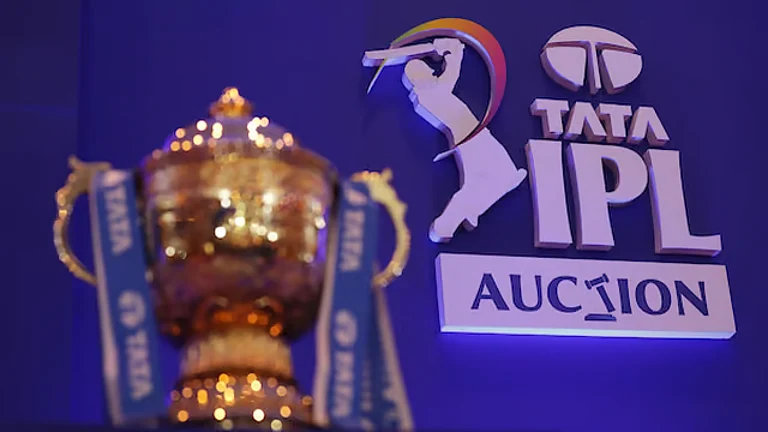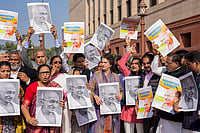Cricket is the only sport where the term ‘old-fashioned’ is a compliment. Novak Djokovic would be insulted if you called him an old-fashioned player. So would Lionel Messi. It is a quirk of the language, and perhaps of the game itself, that ‘old-fashioned’ in cricket does not mean hidebound, inflexible or anything remotely negative.
Rather, it is a throwback to an era of the game that is always harked back to. An era where players were gentlemen, never stepped out of line, respected opponents, never attracted attention to themselves and played not just within the laws but within its spirit. Of course, it is an era that never actually existed except in the writings of the romantics. But like some Shangri-la, it is one that is always spoken about.
It is a mythical world peopled by unreal heroes, but occasionally the game throws up a personality who matches the romantic description.
Rahul Dravid was such a one as this, an old-fashioned cricketer, who gave breath and body to the qualities that cricket aspires to, all the more startling in an era where selfishness was mistaken for professionalism and bad behaviour seen as the rage to perfection. Dravid was as tough and as professional as they come, yet with a moral centre that was uncompromising.
He befriended both triumph and disaster in his first Test, making as many as 95 but missing out on a century. Perhaps out of that experience grew his essential character, the ability to treat these two impostors just the same as recommended by Rudyard Kipling. Without too much effort Dravid could also keep his head when all about him were losing theirs and blaming it on him as well as trust himself when all men doubted him. His approach to sport, and indeed life itself, has been Kiplingesque.
This is as much the result of upbringing as of education. Dravid’s school and college were Jesuit institutions that emphasised the process in the belief that if you did that the product took care of itself. His coach, the late Keki Tarapore, was an articulate man who taught his wards not just the forward defence or the square cut, but the deeper meaning of the word ‘cricket’. He advised them, “First of all, look like a cricketer; then you will think like a cricketer.” From an early age, Dravid both looked and thought like a cricketer. In 22 years of first-class cricket, from which he retired this month, he was not just a cricketer, he was ‘Mr Cricket’ himself, the finest face of a great game.
By any meaningful reckoning, traditional and experimental, he is India’s greatest match-winning batsman, with 24 away wins (Sachin Tendulkar has 20) where he averages nearly 70. When imponderables are introduced into the equation, with such things as the ability to absorb pressure and match impact, he is the greatest “series-defining batsman in the history of Test cricket” (Impactindexcricket.com), his count of eight series-defining performances being greater than anybody else’s.
In the trinity of Indian batsmanship—Sunil Gavaskar, Dravid and Tendulkar—each had a defined (and defining) role. They were The Creator, The Preserver and The Destroyer respectively. With bowlers and wickets at their most fresh, Gavaskar opened the batting to create the platform on which the middle order could build. At number three, Dravid’s role was to preserve a good start or make up for a bad one (on 66 occasions he went in with the score in single digits). In his early days and occasionally even now, Tendulkar was the destroyer incarnate, reducing grown men to tears as they saw their best deliveries disappearing past the boundaries on either side of the wicket.
Dravid not only filled his slot, where he has scored most runs in history, he also was the greatest seat-filler in Indian cricket. The traditional seat-filler is one who, during an awards ceremony, moves into the seat of a star who might have stepped out for a smoke. This is to ensure that TV cameras don’t pick up any gaps. In Indian cricket it is usually a job forced upon the young and unwary who lack the seniority to protest. Dravid hated to keep wickets, and he hated to open the batting, yet whenever the team required him to do so he did the job, even as recently as in England last year when he was already 38 and entitled to occasionally saying “No, thank you.”
He remained unbeaten on 146 after opening the innings at the Oval, and ten minutes later, as India followed on, was opening again. There was no cause greater than the team’s for this most unselfish of cricketers. His third century of the series placed him alongside Don Bradman as the only batsman to do this twice on an England tour.
Much has been written about Dravid’s focus, his obsession with practice and fitness, his incredible figures in the format he enjoyed least, the limited overs game, and his essential qualities as a gentleman and a player. Had it not been for Tendulkar’s presence, we’d have been calling Dravid ‘god’ with the same unselfconscious air with which we call Tendulkar thus.
In his peak years, between 2001 and 2006, it was Dravid’s batting that secured victories in England, Australia, Pakistan and the West Indies. Yet, even in that period, Dravid’s self-deprecatory manner, unusual among Indian players, was remarkable. “People want me to get out quickly so they can watch Tendulkar bat,” he said on one occasion; later he often compared himself to Virender Sehwag to his own disadvantage. Asked if he would make a triple century some day, Dravid replied, “For that you would need a ten-day Test match.”
It was a tone familiar to those who knew him off the field, but seldom accessible to those who only knew him from watching his batting on television. But there was a harmony. The same subtlety and knowledge of angles that marked his batting were evident in his dealings with people and his handling of situations that called for tact and delicacy.
Days before he announced his retirement, he called up his teammates, friends, well-wishers and told them he was about to call it a day. “I don’t want you to read about it in the morning newspapers and get a shock,” he told me after beginning the conversation with, “Do you have a couple of minutes?” When I said, “For you, I have a couple of hours,” he responded immediately, “No, after a couple of minutes I become a bore.”
It was untrue, of course. Dravid could speak for hours about cricket and life and how they were both one as well as distinct.
He was arguably India’s greatest catcher at slip, with 210 victims in his bag; it was all about anticipation and positioning rather than flamboyance and showmanship. Recent statistical studies suggest he was the batsman to have had the greatest impact on Test cricket. He leaves a Dravid-sized hole in an Indian team which will take a long time to fill because the mould was broken.
That inimitable combination of intensity and relaxation, self-awareness and modesty, Test orthodoxy and limited-over creativity is rare. A cricketer has retired, a presence will be missed.
(Suresh Menon is Editor, WisdenIndia Almanack)


























